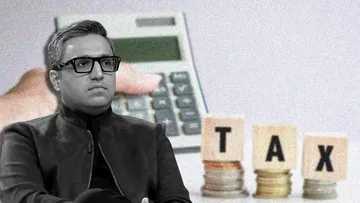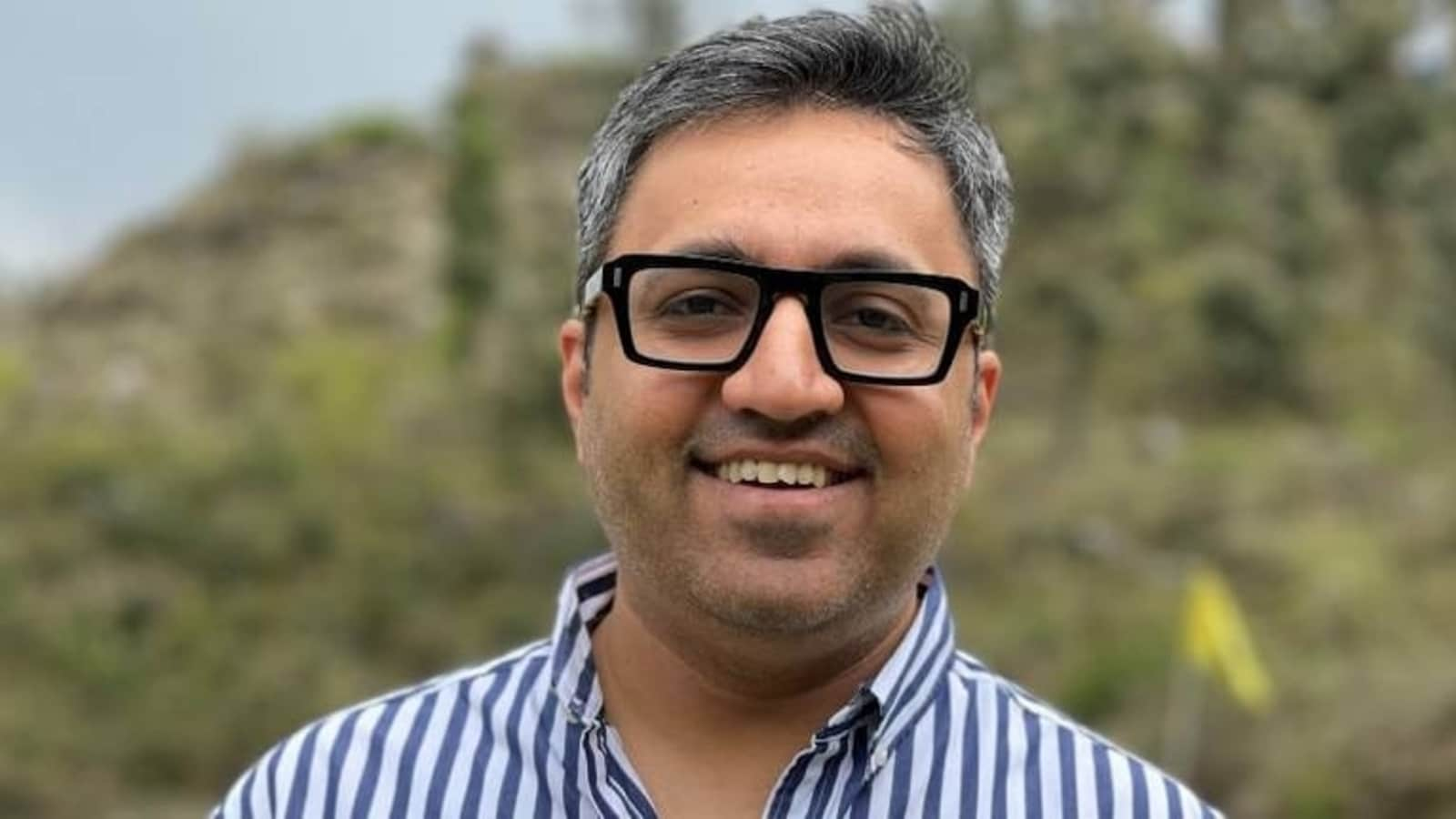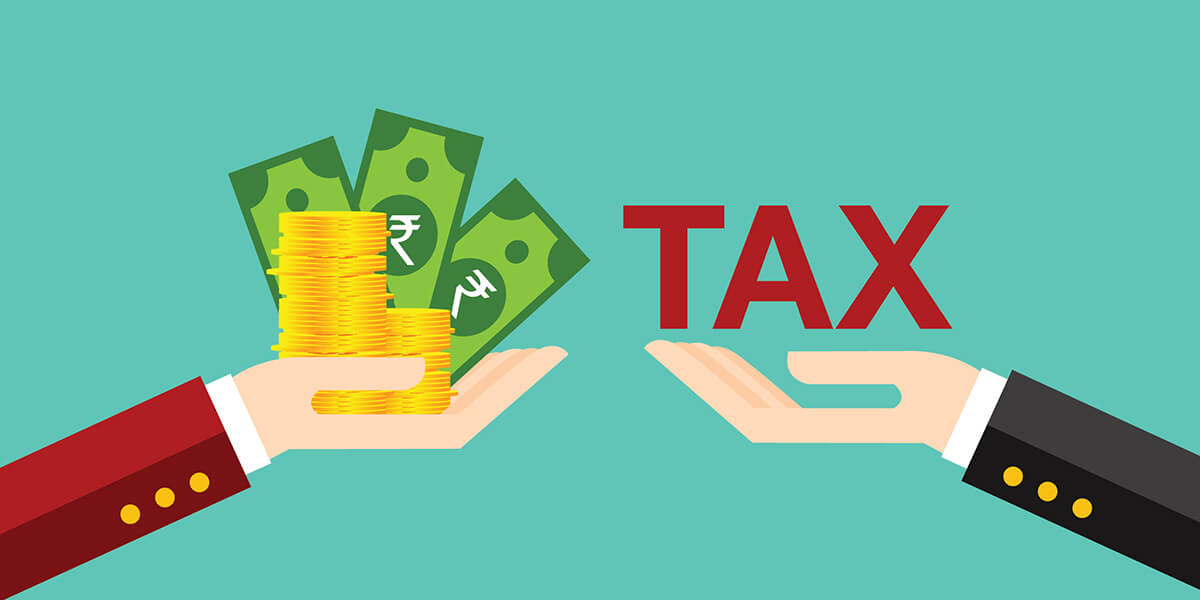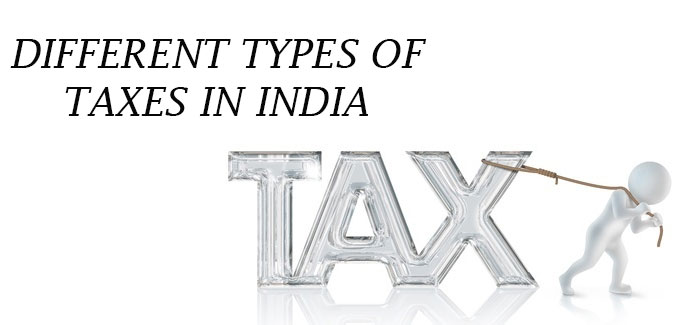Ashneer Grover Sparks Debate on India’s Burdened Common Man, Calls Out The Government On High Taxes; Valid Point Or Just Another Rant?
Grover criticized a recent government notification that introduced a higher Tax Collected at Source (TCS) rate of 20 per cent on international credit card transactions. Mocking the regulation imposed by the government, the former BharatPe MD pointed out the disparity where political donations receive tax exemption while the new rule focuses on tax deductions for credit card spending. Now that we have gone through what Grover has said, it does put a question in one's mind - could this be true?

Former BharatPe MD Ashneer Grover’s recent video rant about taxes in India has gone viral, drawing attention to what he perceives as a skewed tax system in the country.
Grover, who is not without stirring controversies, has, in his recent bit, given his two pieces about what he thinks of the Indian government and the high taxes imposed; Grover argues that paying taxes in India feels like a punishment, as the government takes away a significant portion, around 30-40 per cent, of salaried individuals’ income without providing tangible benefits in return. He contends that taxpayers are essentially engaged in charity, as they do not receive adequate benefits from the government. Grover highlights that individuals end up working for the government for approximately five months out of the year and questions how many years one must be a “slave” to the government under such circumstances.

According to Grover, entrepreneurs often choose not to pay taxes because they understand this disparity, whereas salaried employees have no choice as tax deductions are automatically made through TDS (Tax Deducted at Source).
He describes taxes as a form of punishment, further compounded by the 18 per cent Goods and Services Tax (GST) imposed on various goods and services. Grover prompts his audience to reflect on who they are truly living for when a significant portion of their income is being claimed by the government.
In another viral video, Grover expresses his intention to prioritize reducing income tax rates in India if he ever becomes a politician. He proposes a flat tax rate of 10-15 per cent for all individuals and emphasizes the need for stringent measures to prevent tax evasion. Grover argues that such a uniform tax rate would ultimately result in higher tax revenues for the government compared to the current system, which relies on a 40 per cent marginal tax rate.
One notable controversy revolves around his criticism of a government notification introducing a higher Tax Collected at Source (TCS) rate of 20 per cent on international credit card transactions. Grover took to social media to express his dissatisfaction, highlighting the discrepancy where political donations receive tax exemptions while the new rule focuses on tax deductions for credit card spending. This comment garnered attention and raised questions about the fairness and equity of tax policies.
Another controversial statement made by Grover relates to his views on tax evasion. In a viral video, he suggested that entrepreneurs understand the shortcomings of the tax system and tend to avoid paying taxes, while salaried employees have no choice as taxes are deducted directly at the source.

The Impact Of Ashneer Grover
Grover’s intention to prioritize the reduction of income tax rates in India if he ever becomes a politician has stirred controversy. While some see this as a progressive stance aimed at relieving the burden on taxpayers, others argue that such a move could result in reduced government revenues and potentially negative consequences for public services and development programs.
These controversies surrounding Grover’s comments have ignited discussions on the effectiveness of tax policies, fairness in taxation, and the role of individuals in contributing to the country’s financial stability. While some view his remarks as thought-provoking and highlighting the need for tax reforms, others raise concerns about the implications of advocating for reduced tax rates and potential support for tax evasion.
Grover also criticized a government notification that introduced a higher Tax Collected at Source (TCS) rate of 20 per cent on international credit card transactions. He points out the disparity between this new rule and the tax exemption given to political donations, questioning why political contributions are not subject to any TCS. Grover highlights the irony of the situation where credit card spending is subject to tax deductions while political donations receive preferential treatment.
Grover’s statements have raised questions about the fairness of the Indian tax system, prompting further discussions on potential reforms.

What’s A Common Man Got To Do
From a common man’s perspective, high taxes can indeed create significant hardships and financial challenges. When a substantial portion of one’s hard-earned income is taken away by the government, it directly impacts their ability to meet daily expenses and fulfil essential needs. The burden of high taxes reduces the disposable income available for individuals to support their families, pay bills, cover housing costs, and afford basic necessities like food and healthcare.
The increased tax burden also limits the ability of individuals to save and plan for the future. Saving for emergencies, education, or retirement becomes increasingly difficult when a significant portion of income is allocated towards taxes. This can lead to a feeling of insecurity and vulnerability, as individuals may struggle to build a financial cushion or invest in long-term goals.
For many common individuals, high taxes make it challenging to achieve upward mobility and improve their socio-economic status. The dream of owning a home, starting a business, or pursuing higher education can be stifled when a substantial portion of income is siphoned away by taxes. The financial strain imposed by high taxes can create a sense of hopelessness and limit opportunities for personal and professional growth.
Moreover, high taxes disproportionately impact middle and lower-income groups, exacerbating income inequality. While the wealthy may have more resources to navigate through high tax rates, the common man often bears the brunt of these financial burdens. This further widens the gap between the rich and the poor, limiting social mobility and perpetuating economic disparities.
The impact of high taxes goes beyond immediate financial constraints. It can have emotional and psychological repercussions as well. Constantly struggling to make ends meet due to the burden of taxes can lead to stress, anxiety, and a sense of injustice. The common man may question the fairness of a system that takes away a significant portion of their income without providing tangible benefits or addressing their specific needs.
:max_bytes(150000):strip_icc()/Incometaxes-9dacb2fc1d314896821b07f3933f0c4e.png)
India’s Taxes Compared To Other Countries
India‘s position in the graph of tax collection compared to other countries can vary depending on different factors and metrics considered. When looking at the tax-to-GDP ratio, which measures the total tax revenue collected as a percentage of the country’s GDP, India’s position has historically been relatively low compared to many developed nations.
According to data from the World Bank, India’s tax-to-GDP ratio in 2019 was approximately 17.2 per cent. This places India below the global average and significantly lower than countries like the United States, Canada, Germany, and France, where the tax-to-GDP ratios range from 30 to 40 per cent.
However, the point to be noted is that these countries are developed economies.
Below is a glimpse of the personal income tax rates around the world as of 2023;
India 42.74%, Canada 33%, US 37%, France 45%, Finland 56.95%, Germany 45%, UK 45%, China 45%, Hong Kong 15%, Japan 55.97%, Singapore 22%, Australia 45%.
The outcome of lower tax collection compared to other countries has implications for India’s ability to finance public infrastructure, social welfare programs, healthcare, education, and other essential services. Insufficient tax revenues can result in limitations on government spending, impacting the quality and availability of public goods and services for the common man.
However, it is important to note that tax collection alone does not determine the outcome or effectiveness of government policies. The efficient utilization of tax revenues and effective governance play significant roles in translating tax collection into desirable outcomes. Even with relatively lower tax collection, countries like India can strive to optimize the utilization of available resources, promote transparency, and implement effective policies to ensure the well-being and development of their citizens.
It is worth mentioning that tax reforms have been undertaken in recent years in India to improve tax administration, simplify tax procedures, and curb tax evasion. Initiatives like the Goods and Services Tax (GST) have aimed to create a more unified and streamlined tax system, thereby enhancing tax collection efforts.
These reforms, along with continued efforts to promote voluntary compliance and strengthen tax administration, are crucial for improving India’s position in terms of tax collection and achieving desired outcomes for the country and its citizens.

Has India Successfully Implemented The Tax Collected For The Country’s Benefit?
The effectiveness of India’s utilization of tax revenues for the country’s benefit is a complex and multifaceted issue. While there have been efforts to utilize tax funds for public welfare and development, several challenges persist that impact the overall success of implementation.
One of the challenges is the prevalence of corruption and inefficiencies in the system. Corruption can divert tax funds away from their intended purposes and hinder the effective implementation of development projects. Additionally, bureaucratic hurdles and delays in decision-making can hamper the timely execution of initiatives, leading to a suboptimal utilization of tax revenues.
Another challenge is the vastness and diversity of India, which makes it challenging to ensure equitable distribution of tax funds across regions and sectors. Disparities in development between urban and rural areas, as well as among different states, highlight the need for targeted allocation of tax revenues to bridge these gaps. However, achieving a balanced distribution and effective utilization of funds in such a diverse country poses significant challenges.
Furthermore, there have been concerns about leakage and mismanagement of tax funds. Lack of transparency and accountability in the allocation and utilization of tax revenues can undermine the effectiveness of government initiatives. Ensuring proper monitoring, evaluation, and auditing mechanisms are in place is crucial to mitigate these issues.
However, it is important to acknowledge that India has made efforts to channel tax revenues towards various development programs and initiatives. Examples include social welfare schemes like the Mahatma Gandhi National Rural Employment Guarantee Act (MGNREGA), which aims to provide employment opportunities and promote rural development. Additionally, investments have been made in sectors like education, healthcare, infrastructure, and renewable energy, among others.
Despite the challenges, some positive outcomes can be observed in certain areas. For instance, access to basic services like electricity and sanitation has improved in many parts of the country. Initiatives like Pradhan Mantri Awas Yojana have aimed to provide affordable housing for the economically weaker sections of society. However, the scale and impact of these programs vary across regions and population groups.
The Last Bit, while efforts have been made to utilize tax revenues for the country’s benefit, challenges related to corruption, bureaucracy, unequal distribution, and mismanagement persist. Addressing these challenges requires continuous reforms, strengthening transparency and accountability measures, and ensuring efficient implementation mechanisms to maximize the positive impact of tax revenues on India’s development.
However, Ashneer Grover seems to think otherwise; what is your opinion?




